Red and Blue States Are Hit Equally By Climate, Labor Woes, Says Investment Banker


Amid climate change denial and cries of “go woke, go broke” from the extreme right, at least one large U.S. investment bank has identified bipartisan support for sustainability investments that are likely to yield big returns without political drama.
Modernizing the U.S. power grid, fortifying climate-vulnerable regions, supporting carbon-removal technologies, and eliminating college education as a hiring requirement are economic drivers with support from both Democrats and Republicans, Aniket Shah, global head of ESG and sustainable finance strategy at the global investment banking firm Jefferies, told corporate sustainability executives and bankers at the GreenFin conference in Boston.
“If you work in our field of [environmental, social and governance (ESG)] investing and green finance, you are used to division and pessimism,” Shah said. “But we think there is a bigger story, which is that there are very clear areas of agreement and, therefore, optimism on ESG matters between policymakers, corporates, and civil society of different political persuasions and world views.”
In the run-up to the 2024 presidential election, laws prohibiting the use of ESG factors in managing investments have been passed in 15 states, with additional legislation coming, according to BloombergNEF.
Culture wars are spilling over into brand reputation and consumer buying habits. Bud Light lost billions in revenue in a boycott that began when the formerly top-selling beer sent a customized can to a transgender social media influencer. Target was assailed for selling Pride Month merchandise. Even a brand long associated with Christian conservatives, Chick-fil-A, was criticized for a hire it made years ago to improve diversity, equity and inclusion at the quick-service restaurant chain.
But passage of the Bipartisan Infrastructure Law demonstrates there’s broad agreement from Democrats and Republicans on investments to accelerate and strengthen the economy, said Shah, who teaches at Columbia University in addition to his management role at Jefferies.
“They say the first step in solving any problem is to admit that you have one — and for the energy transition we have a significant problem in the U.S. grid, which is simply outdated for the major renewable buildout that is beginning in this country and underdeveloped in terms of transmission lines needed," said Shah, citing Lawrence Berkeley National Laboratory data estimating the new grid will be 50 percent larger than today’s, and consisting of 95 percent wind, solar and battery storage.
However, regulatory approval for new renewable power projects now takes more than four years, and transmission projects require six and a half years, Shah said, calling for an overhaul of the U.S. permitting policies.
There is political consensus to invest in climate adaptation, Shah said, pointing to $400 billion in economic damage in red and blue states due to storms, flooding, wildfires and other disasters. In June alone, the largest California property insurer stopped underwriting policies, while rates in Florida rose 50 percent, he said.
“We think technologies ranging from precision agriculture, to construction, to water-desalination, to weather intelligence and more will become increasingly important to the U.S. economy and therefore interesting places for investors to invest," said Shah, predicting a federal plan for adaptation and resilience will be published by the Joe Biden White House.
Investment in technology to remove carbon from the atmosphere will also receive bipartisan support, Shah claimed.
“To achieve global net-zero goals, we will need to remove approximately 10 gigatons of CO2 per year from the atmosphere by 2050 for every year going forward, a several order of magnitude increase from where we are today,” he said, heralding new industries that are both nature-based and engineered will be scaled up worldwide.
Outside environmental investments, Shah pointed to the tightening U.S. labor market as a significant risk equally impacting conservative and liberal regions. He pointed to Gallup research showing sharply higher support among Democrats and Republicans for labor unions.
Employers are responding, eliminating a college degree as a requirement for a job at select companies and in multiple states including Alaska, Colorado, Maryland and Pennsylvania, Shah said. Other trends to make jobs more appealing include remote work and four-day work weeks for many white-collar roles.
“There is a growing realization that the United States is facing major worker shortfalls for the twin policies of reshoring manufacturing and accelerating decarbonization,” said Shah, citing predictions for 550,000 additional clean energy jobs by 2030, including electricians and construction roles where there are already shortages.
“This is a problem that will need to get solved,” he said. “It’s a problem that exists in states of all political persuasions, and therefore will get solved.”
Image credit: Courtney Hedger/Unsplash
Xylem Looks to Raise Awareness of America's Rural Water Crisis


A lack of access to safe water — coupled with socioeconomic disparities, aging infrastructure and natural disasters — is accelerating a downward spiral in quality of life for more than 2 million Americans, according to a new Xylem report.
The global water technology company’s analysis looks to raise public awareness of a growing water crisis in the U.S., said Austin Alexander, Xylem’s vice president for sustainability and social impact. It spotlights the increasing challenges rural communities in the United States face because of limited water access and poor water quality.
“Once you have awareness of the issue, then we can start talking about solutions and funding and all those things that can help fill the gap,” Alexander said. “But we really are just in a moment, I think, of many Americans not realizing the extent of the issue in our own backyard.”
A rural water crisis is brewing in our own backyards
More than 46 million Americans, 15 percent of the total U.S. population, live in rural areas, according to the 2020 Census. How they access water, the quality of that water, and if they get water at all is far from certain.
Persistent and serious water quality problems are increasingly common throughout the U.S. In both urban and rural areas, deteriorating water infrastructure and ineffective water treatment facilities can cause contamination in water flowing through the tap. Rural residents who get their water from wells are also at risk, as agricultural runoff, pollutants, and stormwater can seep in and cause contamination. As groundwater levels decline across the country, a growing number of wells are also at risk of running dry.
In addition to the 2 million Americans without access to safe drinking water, millions more might be exposed to contaminated water from wells and small systems that are not regulated by the Environmental Protection Agency (EPA).
The circumstances for water systems covered by EPA regulations are not much better. From 2016 to 2019, nearly 130 million U.S. residents got their drinking water from systems that violated the federal Safe Water Drinking Act, according to an analysis of 50,000 active community water systems conducted by the Natural Resources Defense Council. Small water systems — those that serve less than 3,300 people in mainly rural communities — were responsible for more than 80 percent of all violations.
What can we do?
Xylem’s report offers a range of recommendations for individuals, businesses, nonprofits and governments looking to address these problems. The actionable steps include increasing investment in water infrastructure and expanding access to financing for rural water systems. Local tax dollars alone are generally not enough for small communities to finance water infrastructure upgrades. While state and federal aid programs exist, they're often competitive and fall short of what's needed, experts say. The report calls out awareness-building and public-private partnerships as a means of improving infrastructure in rural communities and filling the existing gaps.
The company also pinpoints smart water technology as having high potential for rural communities. As TriplePundit's Kate Zerrenner has previously reported, "Having a smart system in place can provide real-time monitoring to respond to emergency situations and, optimally, mitigate damage and enhance emergency response time as well as improve the speed of recovery." But again, rural communities need funding to put such systems into place.
On that front, Xylem has also taken steps to address the water crisis itself. The company works closely with government officials and advocacy groups, such as the Water Systems Council (WSC), on public policy to solve domestic water challenges.
Along with the WSC, Xylem helped lobby Congress for the 2016 passage of the WIIN Act, which includes provisions to help small and economically disadvantaged communities improve access to safe, reliable water. The company brings water to additional families in need through its Watermark program in partnership with the WSC’s nonprofit arm Water Well Trust.
Xylem also works with the Chris Long Foundation’s Waterboys initiative and the Water Well Trust to bring further awareness to domestic water issues. In 2021, their partnership installed a new well for a family in Bertram, Texas, who lived without running water for nearly four years after their existing well collapsed. The partnership has completed similar projects in Oregon, Virginia, North Carolina, Illinois, Georgia and Missouri.
Public awareness sparks action on the water crisis
The Xylem report examines the American dimensions of a growing global problem that is becoming more acute and disruptive. About 2 billion people on the planet lack access to safe drinking water, and 3.6 billion lack access to safely managed sanitation, according to the World Bank.
“Gaps in access to water supply and sanitation, growing populations, more water-intensive patterns of growth, increasing rainfall variability, and pollution are combining in many places to make water one of the greatest risks to economic progress, poverty eradication and sustainable development,” an overview from the World Bank reads.
Despite these challenges, Alexander is hopeful that increased public awareness of the water crisis could help spark more action to find and implement solutions.
“I don’t think we’ve seen a moment in time where the water crisis has been in the headlines and gaining so much attention as it is today,” she said. “We’re on the precipice of a mindset change among the general public that these issues are real, they’re here and we have to address them.”
Image credit: Steve Johnson/Pexels
This Technology Helps Limit Peak Energy Use and Cut Carbon Emissions
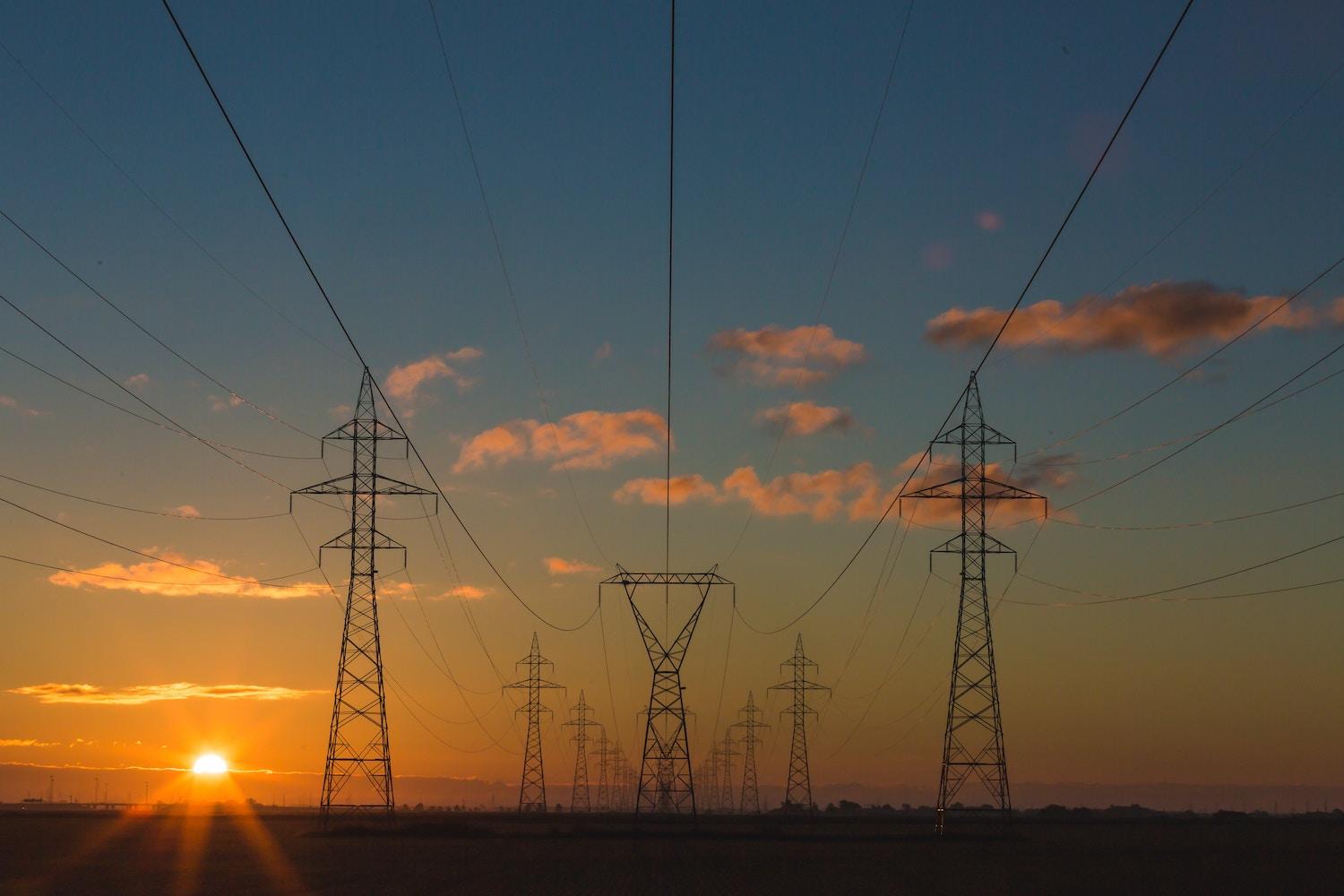
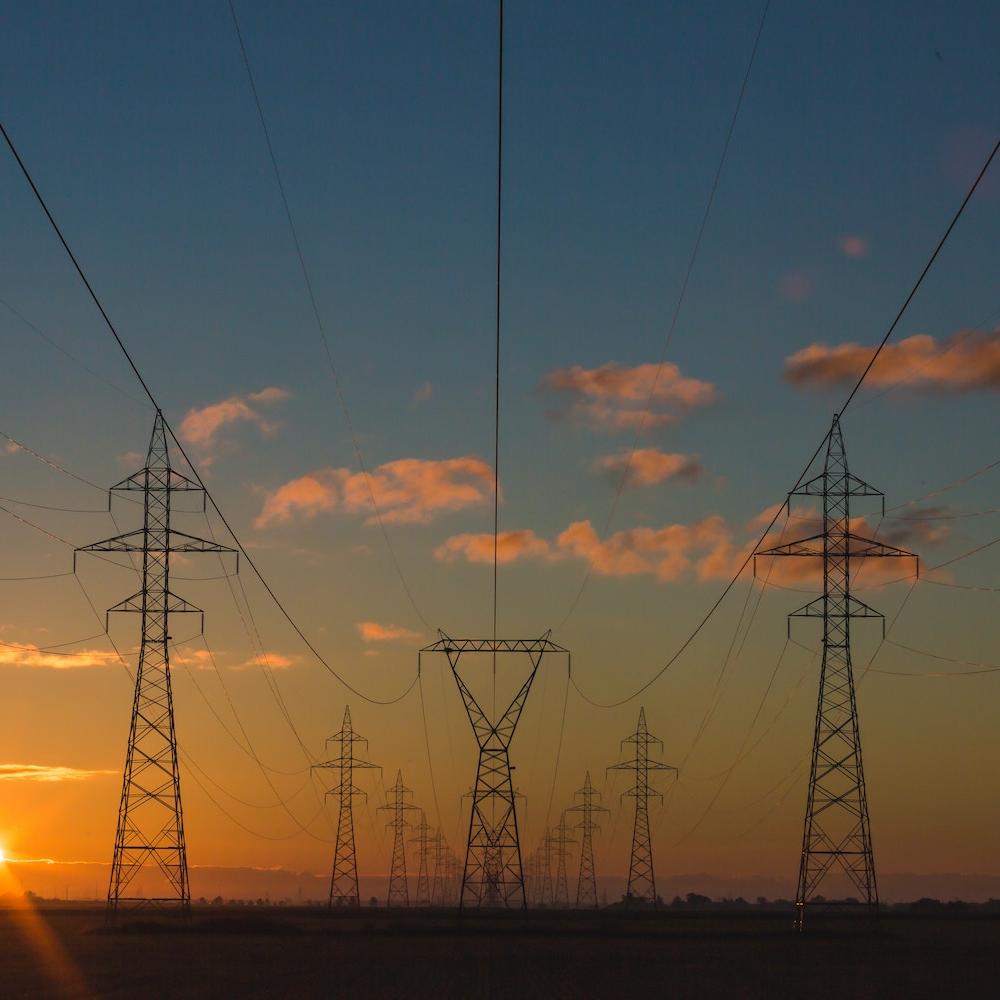
The carbon footprint of a home or office is based on a lot more than how much electricity it uses. When a building uses electricity can have a significant impact as well. That goes for electric vehicle (EV) charging, too. To make the most out of this dynamic, a climate technology company out of New York developed a set of tools for building managers and occupants alike.
Logical Buildings is behind the GridRewards app, which helps residents shrink their footprints while putting cash in their pockets, and the SmartKit AI software that helps commercial building managers increase energy savings by improving efficiency and sustainability.
Information is power
“Our goals are decarbonization and empowering people,” Jeff Hendler, CEO of Logical Buildings, told TriplePundit. "One of our monikers is 'shift the power.'"
As grids continue to decentralize, new opportunities emerge for individuals to track and take control of their own energy usage. Part of that trend centers on the installation of advanced metering infrastructure (AMI), which provides frequent, time-of-use, energy consumption data.
“That's really one of the key prerequisites to empower people to combat climate change — to know what to do and when,” Hendler said. “Certain times of day, there's more carbon being generated by the grid. And if you were to know that, you had that visibility, that access to information as an end user, that will change your decisions and how you behave.”
The reason carbon output is higher during some periods boils down to the need to bring peaker power plants online to meet increased demand during peak hours. These plants are notoriously dirtier and emit substantially more carbon than base load plants. That's because peaker plants are fossil fuel intensive, whereas many regions may rely heavily on nuclear energy or hydroelectric dams during non-peak times. That means the same amount of energy used during non-peak times creates substantially fewer carbon emissions than during the peak.
By providing consumers with this data, the GridRewards app empowers them to make informed decisions about when it’s best to do things like run appliances, charge EVs, and pre-cool their apartments or homes, Hendler said. The app can also be integrated with smart devices — such as smart thermostats and appliances — to further reduce carbon output.
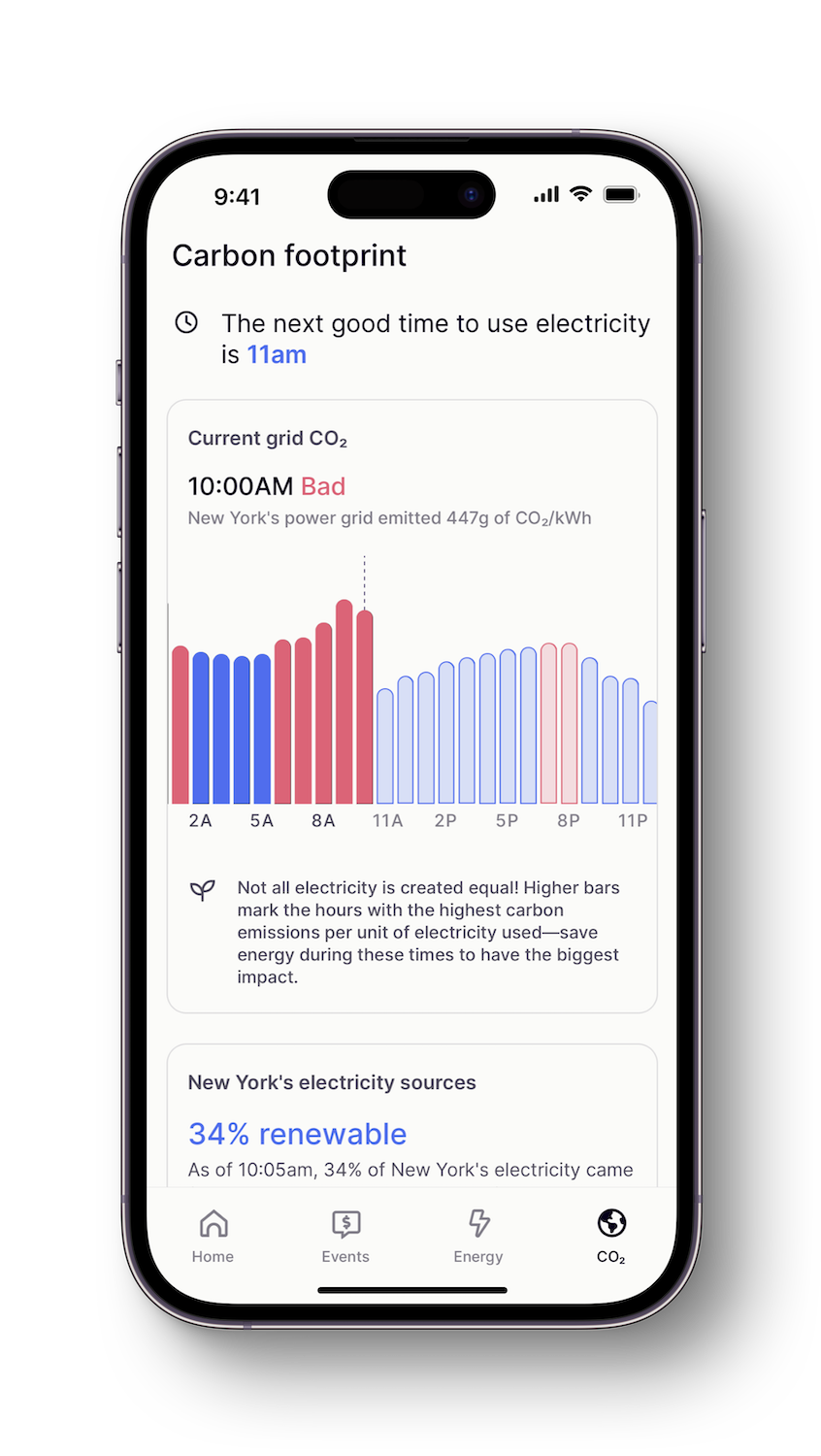
Energy data availability is still limited
Unfortunately, the GridRewards app isn’t available everywhere, as the necessary AMI meters have not been universally installed, Hendler said. The app was first available in New York City, and its range has since expanded to California and Texas. The company is working to get registered in Ontario, Canada, as well.
“There are many states that have an AMI meter, but they're still going through the process of implementing the mobile protocol to enable the data,” Hendler said. On the other hand, “SmartKit is the type of product that is applicable anywhere on planet Earth. It's helping large building spaces use less."
SmartKit is more broadly applicable because most commercial meters have the sort of data needed to run the software, even if AMI is not installed locally yet, Hendler said.
Information and compliance for larger buildings
SmartKit AI works by learning a building’s profile and energy use habits. It combines that with the weather and other data, such as renovations and activities within the building, to try and eliminate peak energy usage. As a result, the software offers building operators guidance on staggering activities, pre-heating or pre-cooling to keep energy usage even. Scheduling move-outs and move-ins from residential buildings using elevators is one example of staggering activities, Hendler said.
SmartKit AI can be used to lower costs and carbon output for large spaces such as multifamily buildings, office buildings and industrial sites, he said. But the biggest challenge is getting people to realize these tools are out there.
“Five years ago, speaking to building operators was more of a challenge in terms of that inertia,” he said. “The culture has definitely changed. People are really seeing the effects of climate change. Carbon compliance has become a cultural choice. People are like, ‘Hey, I need to do something about this.’ Whether it's ESG — environmental, social [and] governance. Whether you have certain cities that have carbon compliance laws like New York City Local Law 97, which is actually starting in 2024.”
Local Law 97 aims to tackle the two-thirds of greenhouse gases in New York City that come from buildings. The law will apply to buildings over 25,000 square feet, lots where two or more buildings are over 50,000 square feet, and condo associations with more than 50,000 square feet. While initial regulations will go into effect next year, they will be further tightened in 2030. The city hopes to reduce greenhouse gases from its largest buildings by 40 percent by 2030 and 80 percent by 2050. Naturally, the law could inspire other municipalities to follow a similar course.
Making it simpler to do the right thing
The state of the climate and the work that needs to be done can feel incredibly overwhelming. Fortunately, tools like GridRewards and SmartKit AI are making it easier for consumers and building operators to make small changes that will reduce their energy usage and carbon output.
While such apps won’t solve the whole problem, they can help people to take greater responsibility for their small piece of the pie. And regulations like New York’s Local Law 97 will likely encourage larger emitters to utilize such technology as a part of their campaigns to reign in greenhouse gases — something that could have a huge overall effect in urban areas.
Image credit: Matthew Henry/Unsplash
Learning from New Zealand's Animal Welfare System: How a Farmer-Led Approach Pushes Industry Commitments Forward


On-farm animal welfare is a growing concern for consumers. Though some principles of animal welfare — such as housing, nutritional programs and care interactions — have been established, the implementation of these practices is below par in many parts of the world, according to farm animal welfare literature.
To tackle this issue, New Zealand’s Ministry for Primary Industries collaborated directly with farmers and the country’s red meat industry to launch the New Zealand Farm Assurance Program (NZFAP) in 2017. The national program is a collective of red meat and wool businesses that adhere to verified best-practices for animal welfare and production.
We spoke with Dr. Will Halliday, senior advisor for biosecurity and animal welfare at the farmer-owned industry organization Beef + Lamb New Zealand, about the importance of prioritizing animal welfare and the impact of the NZFAP on farmers and other stakeholders.
Ensuring animal welfare is ethical, and it’s also good for business
New Zealand's Animal Welfare Act, passed in 1999, includes language which recognizes that animals can experience and understand positive and negative emotions. In addition to this, considering and meeting animal welfare standards is also beneficial for businesses, Halliday said.
Animals that are cared for “are more productive,” he told us. “So not only do we have animals that experience a good life, but they are also more productive for our farmers. They grow faster and bigger and produce what we consider to be a premium product.”
New Zealand’s national Assurance Programs — NZFAP and NZFAP Plus — provide certification based on audits in areas of integrity, traceability, biosecurity, origin, environmental sustainability, and animal health and welfare.
“What it means is that customers now can be assured that all of New Zealand’s producers of red meat are meeting that same threshold, the same high-quality standard,” Halliday said. “You can buy a piece of New Zealand meat in the supermarket and have confidence that there is a single standard that has been met by whoever produced that piece of meat. You can be assured they have done it sustainably, with good environmental and animal welfare practices.”
Beef + Lamb New Zealand represents New Zealand’s beef and sheep farmers. Among its members is First Light Farms, a collective of family farms across New Zealand that produce grass-fed wagyu beef and venison and communicate regularly about their duty of care to animals.
"Animal welfare is important to both the public and our customers. Without good animal welfare, farmers would lose the social license to operate in New Zealand,” said Nicola Morgan, general manager of sustainability, technical and quality assurance at First Light Farms. "First Light consumers demand third-party verification that our animals are being treated well.”
Again, she underscored that along with being the right thing to do, treating animals well is essential to ensuring a quality product. "In general, animal welfare affects meat quality, but this is particularly significant for our grass-fed wagyu cattle, who require optimal conditions and welfare to marble well,” Morgan said.
Assurance programs establish credibility, and incentives are a win-win for stakeholders
To date, New Zealand sheep and beef farmers are among the most efficient farmers in the world, and the nation's red meat carbon footprint is one of the world's lowest, in fact less than half the global average.
In Halliday’s view, what differentiates New Zealand from other countries is that it takes the approach of farmer-led first, as opposed to top-down regulation. In this “grassroots level” approach, incentives are provided for farmers to take on sustainable and efficient practices — all of which makes assurance programs and incentives a win-win for animals and farmers in the country’s meat industry.
“Farmers can enjoy a premium for the product they supply based on whatever practices they undertake,” Halliday said. “Farmers who do that have better productivity, better animal welfare, and they're also enjoying the premium.”
How participation in animal welfare groups can drive immediate action
Given that it established animal welfare protections over two decades ago, New Zealand is recognized for its trustworthy animal management practices. National and regional governments, as well as farmers, also want to protect their land and water resources and continue to call for high standards, Morgan said.
“Farmers recognize the value of healthy animals and soil, for production efficiency and future-proofing their asset,” she told us. “Holding third-party verifications delivers a premium from consumers for farmers. Our farmers are farmers because they care about what they do — they want to protect the quality of their land, and they care about their livestock.”
For First Light Farms, involvement in groups like the NZFAP instills confidence in customers and partners, and it offers opportunities to learn, Morgan said. "Being a member of [the NZFAP] gives our farmers a start point,” she said.
Around 8,000 farms across New Zealand are certified in the NZFAP, representing more than 95 percent of the country's beef, sheep, deer and wool production. Many of them, including First Light Farms, also use certification systems like the Non-GMO Project and the Certified Humane and ASPCA standards to further verify their environmental and animal welfare practices.
"We expect more of our farmers, who rightly expect to be financially rewarded for their investment,” Morgan said. “Having a great product, surrounded by third-party verified attributes, gives both our retail partners and our consumers reassurance and confidence.”
This article series is sponsored by Beef + Lamb New Zealand and produced by the TriplePundit editorial team.
Image courtesy of Beef + Lamb New Zealand
Corporate Clean Energy Buyers Are Saving the Grid
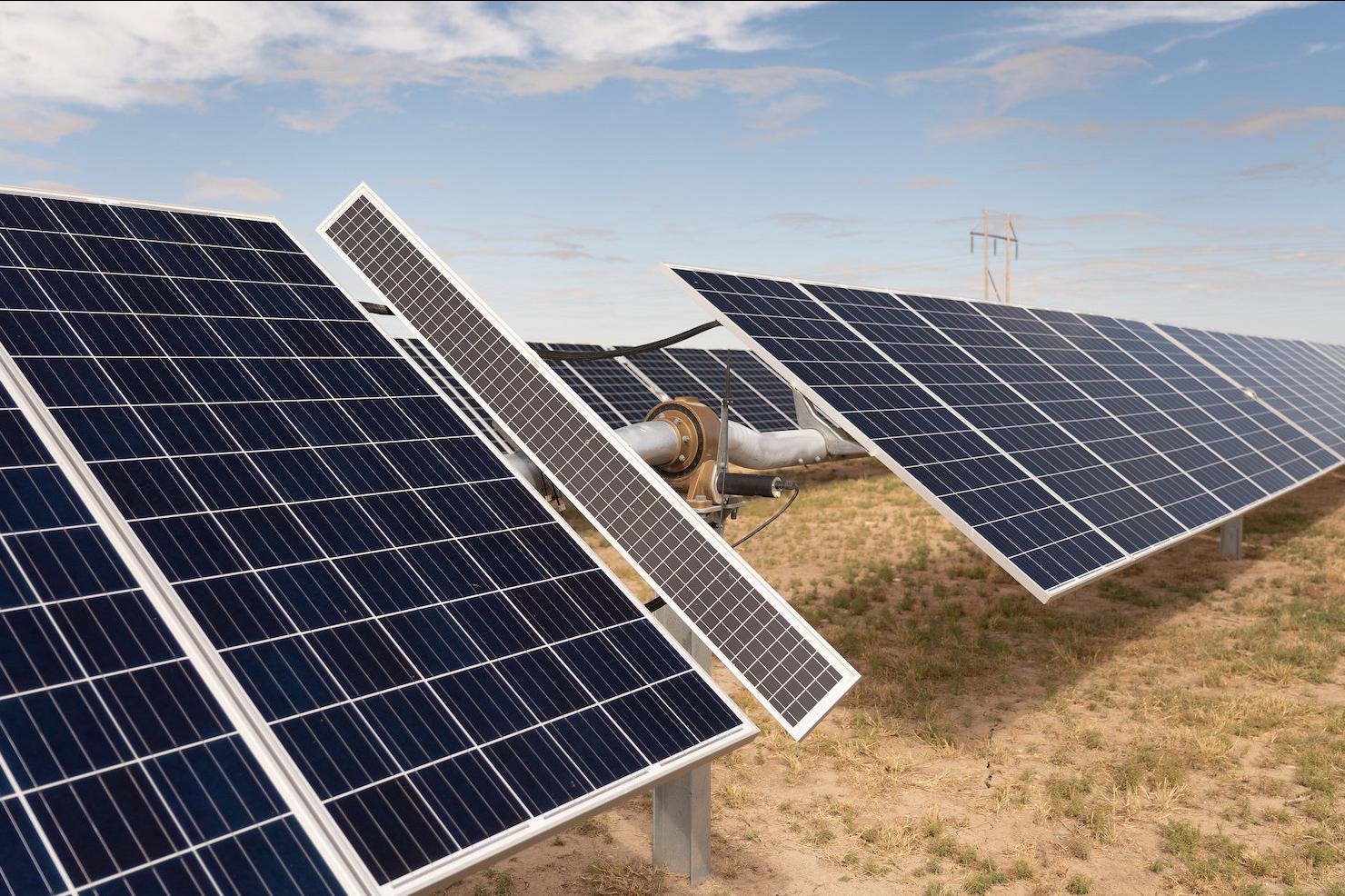
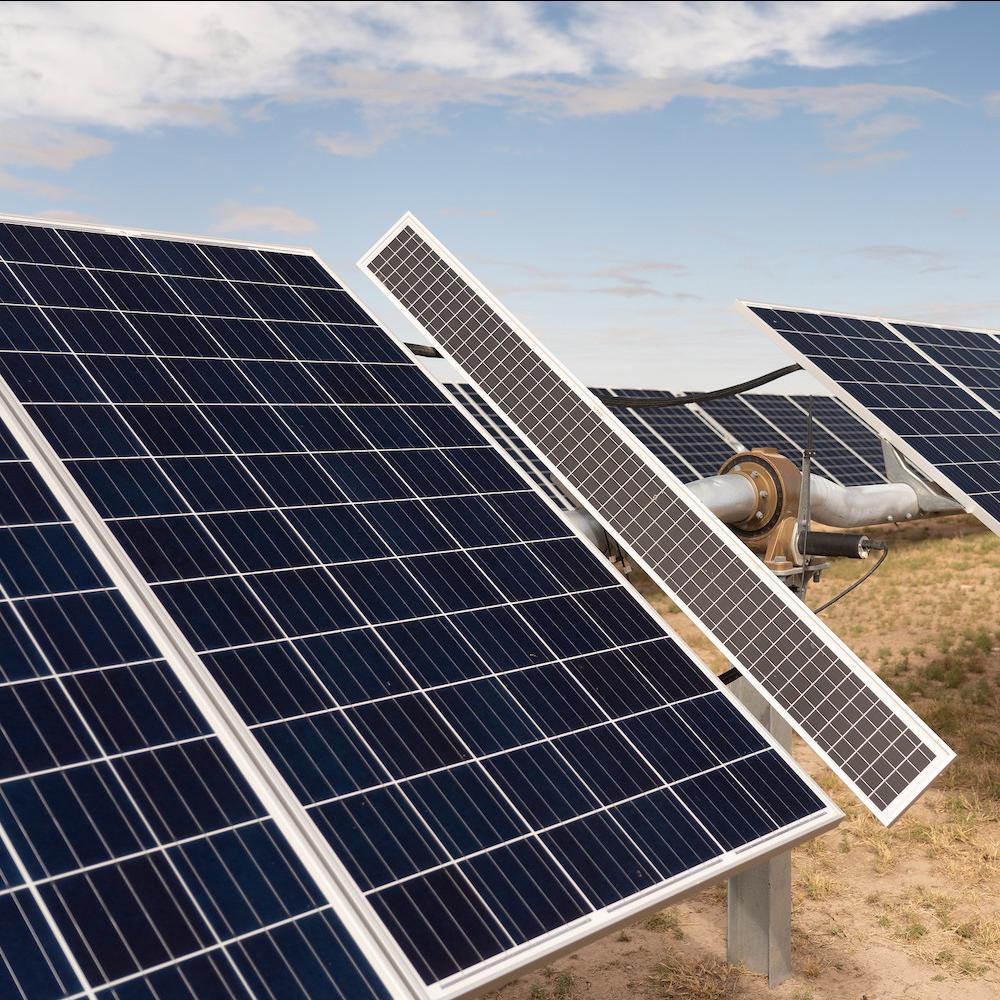
A one-megawatt solar installation in western Texas. (Image: Jonathan Cutrer/Flickr)
Fossil energy stakeholders continue to insist on the need for new gas power plants, but evidence is emerging that wind and solar power can buffer the electricity grid from heat waves and other extreme weather events. That provides more support for corporations to continue lobbying for more clean energy, both as a means of climate action and a simple bottom-line matter of keeping the lights on.
Clean energy comes through in Texas
Both wind and solar power were lauded as workhorses during an extended heat wave that descended on Texas last month.
“Experts credit the state’s diversity of energy sources for keeping the lights on. The significant increase in solar power generation in recent years has helped meet the growing demand for electricity in Texas, which operates its grid largely independently of the rest of the country,” the Texas Tribune reported on June 28.
“The Texas power grid comfortably met record demand during this week's heat wave with abundant power supply from wind and solar plants, data from the grid operator showed,” Reuters reported on June 30, noting that the Texas grid added more than 6,300 megawatts of wind and solar along with more than 1,300 megawatts of grid-stabilizing energy storage, just in the past year.
Wind speeds tend to slow during heat waves, and solar panels function less efficiently in hot weather. However, the additional clean energy and storage capacity helped to counterbalance heat-related slowdowns in output.
Grids are vulnerable to extreme weather
The growth of clean energy in Texas made a marked difference in grid stability compared to years past. In February of 2021, for example, a severe winter storm propelled a lethal, widespread blackout In the state. At the time, Texas Gov. Greg Abbott quickly blamed the failure on wind turbines and solar panels. However, a body of follow-up reports identified the chief culprit as frozen conditions among the state’s large roster of unweatherized gas power plants.
The problem was exacerbated when the supply of gas to power plants was disrupted by inadvertent electricity cut-offs when utilities tried to prevent further grid damage.
“At one point during February’s storm, more than half of the state’s natural gas supply was shut down due to power outages, frozen equipment and weather conditions,” the Texas Tribune reported last year.
Though wind and solar did lose some capacity in the storm of 2021, as did all other forms of power generation, that was far outweighed by gas outages. On average, gas power plants supply 42 percent of the state’s electricity, meaning that any system-wide impact on the gas sector will have an outsized effect on the grid.
The problems in Texas were further amplified by its unique grid, which lacks the interconnections that could have enabled it to call upon resources in other states.
Texas leads on clean energy
The case for clean energy was difficult at the beginning of the 21st century when the technology was relatively new and costs were high compared to conventional resources.
Nevertheless, the Texas wind industry was already racing to lead the nation. It was fueled by a major new transmission system that began operating in 2013, as part of the state’s Competitive Renewable Energy Zones (CREZ) initiative. The new CREZ system brought wind power from the sparsely populated western part of the state to high-demand regions in the east.
The new transmission system did not just pop up out of nowhere. It was a joint venture between two corporate giants, comprised of a subsidiary of the Ohio-based energy firm American Electric Power and MidAmerican Energy Holdings, a subsidiary of the Nebraska-based firm Berkshire Hathaway.
New transmission lines are notoriously difficult to build, but the CREZ system progressed relatively quickly after first proposed in 2005. In a 2020 study of the project, Rice University attributed its success to the “influence of wind power inventors and developers on specific legislators and the governor.”
Rice also cited the state’s strong history in energy entrepreneurship, as well as public support for clean energy and lobbying by environmental groups. Similar factors have also propelled growth in the state’s solar industry. Texas is now second only to California in solar capacity.
Texas businesses support clean energy
The power of corporate energy buyers has been on full display across the U.S. since 2015 when business leaders organized in support of former President Barack Obama’s Clean Power Plan during the runup to the 2015 Paris Agreement on climate change.
The Clean Power Plan never took effect, and former President Donald Trump pulled the U.S. out of the Paris Agreement. But U.S. corporations have continued to push the renewable envelope by leveraging their own buying power — including in Texas.
Still, despite growth of wind and solar in Texas, the state's legislature has turned against clean energy in recent years. A new law intended to thwart ESG (environmental, social and governance) investing took effect in 2021, for example. But hundreds of Texas businesses continue to lobby in support of clean energy.
One group, the Texas Energy Buyers Alliance (TEBA), counts almost 400 companies on its rolls, including some of the largest employers and electricity users in the state. When state lawmakers introduced two burdensome new bills earlier this year, TEBA lobbied against them.
“The Legislature should strengthen our open energy market without discriminating against vital clean energy resources — and without picking winners and losers among the range of technologies Texas needs to power its future,” TEBA advised in a sponsored article posted on the Texas Tribune website.
Workplace Weight Discrimination is an Overlooked, Critical Aspect of DEI


Weight discrimination is a common but under-identified aspect of workplace inequity that is finally getting some attention as organizations look to embrace a wider and more holistic definition of diversity, equity and inclusion (DEI). Addressing the problem isn’t just the right thing to do, experts say — it is a fundamental aspect of social justice.
“Weight discrimination would be any form of offense, harm or oppression at the expense of one's weight that could be detrimental to an employee’s mental, emotional or physical health,” said Krystal Hardy Allen, founder and CEO of K Allen Consulting and author of “What Goes Unspoken: How School Leaders Address DEI Beyond Race.”
Weight discrimination affects individuals across various industries and occupations. In fact, studies show the majority of employers would prefer not to hire a candidate who ais visibly overweight.
There are significant ramifications to weight discrimination in terms of lower compensation, fewer promotions, denial of health insurance and other aspects of employment. Some employees are required to meet weight requirements in order to qualify for full healthcare coverage, and studies show that overweight people earn less in their lifetimes compared their colleagues.
The mental health consequences of weight discrimination should not be overlooked as they can affect spiritual well-being and the ability to operate while working, Allen said.
“Trauma can occur in a workplace environment from peer to peer or from managers to direct reports and vice versa,” she said. “There's a very real connection between a feeling of inadequacy or imposter syndrome and the work climate and conditions in which a manager or supervisor, for instance, may not grant you certain opportunities because they don't feel you are 'the right face' for the organization or the brand.”
Weight discrimination should be on the radar of every organization’s DEI strategy as a matter of policy, practice and social justice, she advised. A native of historic Selma, Alabama, Allen grew up in a space where discussion around social justice advocacy and activism was “as normal as learning how to read a map.” For her, weight discrimination fits into that space.
“Any form of harm, injustice or oppression is an injustice,” she said. “And so, any commitment we make to bettering the world for humans is social justice work.”

Weight discrimination depends on context
While in the U.S., weight discrimination might more commonly affect those who are of a heavier weight, Allen points out that it depends a great deal on context and geography.
“Different countries present different realities for workplace climate and conditions,” she said. “In certain countries, there are body types that tend to be ‘the average’ or what one would consider to be the 'normative' body type or weight. It’s not just about being heavier. In some cultural contexts, being too skinny or small can be the target of discrimination, where being more voluptuous is the norm and seen as a sign of being healthy.”
Organizations need to be inclusive of weight discrimination
There are few legal protections specifically targeted at weight discrimination in the U.S. Michigan is the only state with a law making weight a protected category. And discrimination based on weight is banned in only a few cities such as San Francisco, Madison and, most recently, New York City.
Without much legal recourse, the onus is even more so on organizations to ensure this issue is acknowledged and addressed in their DEI strategies, Allen said. The first step is being aware that this type of discrimination exists and that a thoughtful approach is required to solve it.
“It takes a lot of intentionality for organizations, when they make a commitment to diversity, equity and inclusion, that they are not pigeonholing diversity and inclusion to only be about one identity and one lived experience,” she said.
Creating the conditions for change
Once weight discrimination becomes part of an organization’s awareness, it is a matter of creating the right conditions and climate for change. A helpful approach that Allen recommends is liberatory consciousness, a concept developed by thought leader Barbara J. Love.
The framework uses four elements — awareness, analysis, action and accountability/allyship — to change systems of oppression. And it is a way for an organization to be conscious of all forms of oppression before it applies any action, Allen said.
“It could include being mindful even in the process of planning events — for example, an outdoor physical team-bonding activity — and giving everyone an opportunity to raise concerns confidentially if needed, to be as accommodating and thoughtful as possible to every individual who works there,” she said.
For Allen, the bottom line is that “every organization should be open to an intersectional approach or a diverse way of thinking of identity and lived experiences.”
Along with awareness raising, the right policies and practices are critical, she adds. Capacity building and learning opportunities give people the knowledge of what an equitable policy actually is and bring to the forefront any biases they might be operating under.
“A change in practices and policies is vitally important because it pushes the organization to ask if they are being true to what they believe,” Allen said. “And it certainly gives protection to those who are on the receiving end of harmful acts and treatment because it gives them a sense of psychological and emotional safety, that they are cared for, that they do matter, and that the organization is invested in making sure that they are 100 percent part of this team.”
When organizations undertake an analysis, like auditing their practices, they can better understand the experience of their employees, Allen said. “That can be through a survey, focus groups [or] one-on-one interviews, but you have to ascertain and understand the current state before you move to action and develop a real plan to shift your policies, to shift your language and other unconscious forms of bias around weight discrimination.”
The good news is “that we're incrementally getting better when it comes to this topic," she said. "I invite all organizations to have more intentionality around weight discrimination as a way to evolve their DEI approach.”
Image credits: Hannah Busing/Unsplash and Krystal Hardy Allen